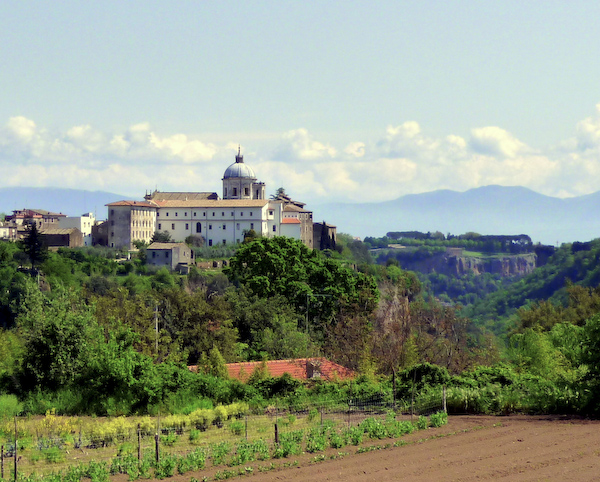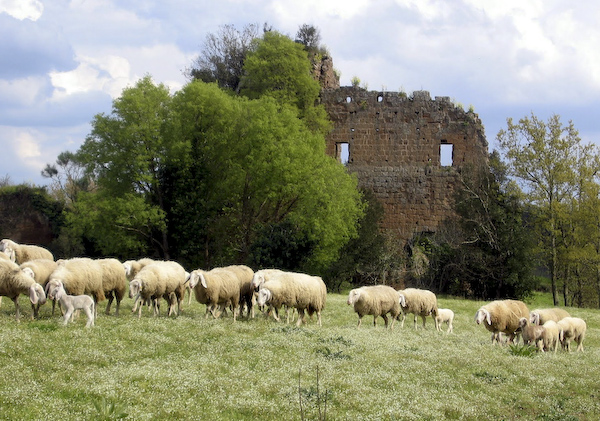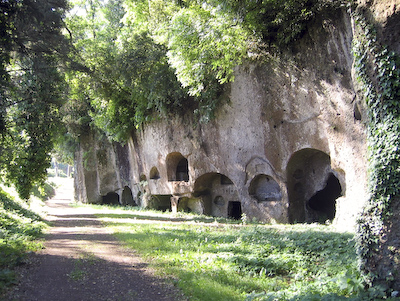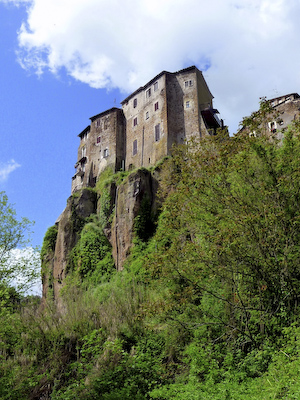
Calcata above Treja gorge
The Treja Basin
Cradled in a broad volcanic basin, dozens of streams pour into the Treja River: deep gorges arranged like veins in a leaf. Between them rise tall promontories, many of which were chosen as strongholds by the ancient Faliscan people, a Latin tribe which flourished before the Romans. Faliscans imported fine pottery from Greece, and created their own masterworks in clay and metal as well. Many are displayed in the museum at Civita Castellana, site of the dominant Faliscan city.
With excellent natural defenses, the promontories were fortified again in the chaotic middle ages to provide a secure travel corridor. A raft of ruined castles and towers remain, as well as the colorful villages of Nepi, Calcata, Castel Sant’Elia and Civita Castellana. The last boasts an imposing Renaissance fortress and a lovely 12th-century cathedral with recycled Roman columns and a stunning Cosmatesque-style mosaic floor.

Nepi

Treja River

Sutri

Castel d'Ischia

Tombs, Sutri
Hermits, too, sought refuge from the prevailing chaos. In the sixth century they began occupying caves in the remote canyons, gradually grouping together in monasteries like Santa Maria ad Rupes outside Castel Sant’Elia. These self-sufficient communities would become an advance guard in the eventual reorganization of the social order in Europe.

Roman amphitheater, Sutri
Major historical events took place in nearby Sutri: a decisive battle for Roman domination, the birth of the powerful Papal States, and a visit by Charlemagne in the year 800 that inspired the legend of the Paladin Orlando. A monumental Roman amphitheatre remains – carved into the rock – as well as an astounding lineup of Etruscan tombs. One of these was later fashioned into an eerie cult chamber of the Persian god Mithras – and then into a Christian chapel!

Corchiano

Basilica, Castel Sant’Elia

Lake Bracciano with castle



